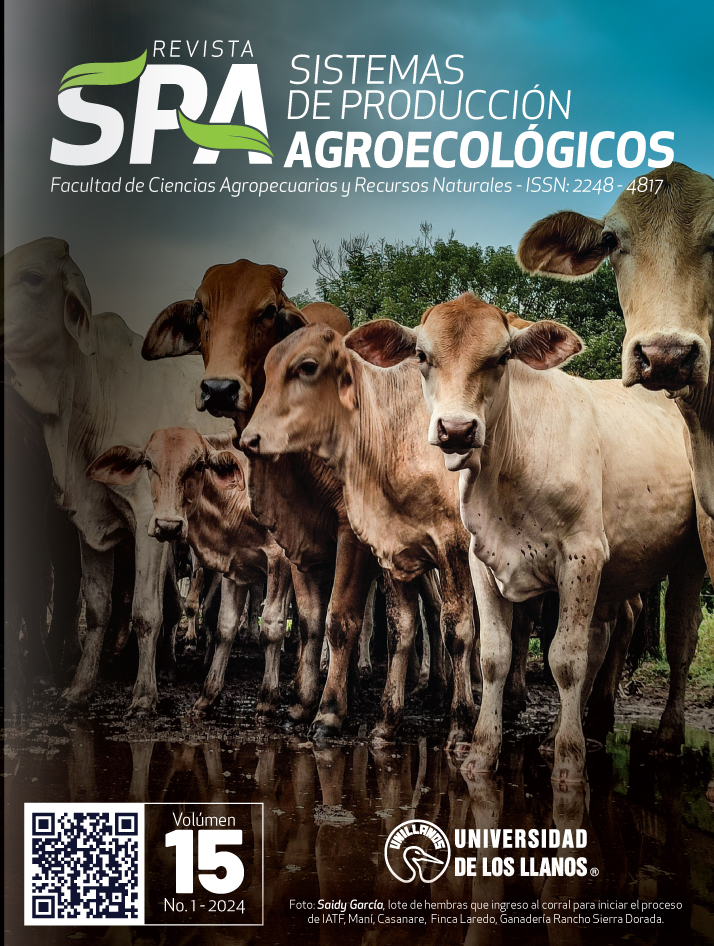Clínica felina con enfoque cat friendly: experiencia significativa desde el aprendizaje
Feline clinic cat friendly practice: meaningful learning experiences
Contenido principal del artículo
Resumen
La medicina veterinaria enfrenta el desafío de abordar las diferencias interespecíficas desde su inicio, impulsando al veterinario a especializarse no solo en sistemas sino también por especie. La diversidad de especies limita la eficacia de un enfoque único, haciendo esencial el conocimiento profundo de la etiología, fisiología y temperamento de cada animal. Este trabajo analiza la implementación de conceptos "cat friendly" en la formación de estudiantes de Medicina Veterinaria y Zootecnia, enfocándose en el manejo diario de felinos y los retos que esto representa. Mediante el estudio de 528 felinos durante seis meses, se exploraron las diferencias en la dificultad de manejo, clasificando los animales por manejo (fácil, moderado, difícil), sexo, estado reproductivo y edad. Los hallazgos indicaron una relación significativa entre el sexo y la dificultad de manejo, con los machos siendo más difíciles de manejar que las hembras; los jóvenes adultos mostraron mayor dificultad en comparación con otros rangos de edad, y los animales castrados resultaron más fáciles de manejar que los no castrados. Estos resultados subrayan cómo el programa "cat friendly" mejora la capacitación estudiantil, preparando profesionales capaces de atender adecuadamente a los felinos, que presentan necesidades distintas a las de los caninos.
Descargas
Detalles del artículo
Palabras clave
Referencias
• Amat, M., de la Torre, J. L., Fatjó, J., Mariotti, V. M., Van Wijk, S., & Manteca, X. (2009). Potential risk factors associated with feline behaviour problems. Applied Animal Behaviour Science, 121(2), 134-139. https://doi.org/10.1016/j.applanim.2009.09.007
• American Association of Feline Practitioners. (n.d.). Respectful handling of cats to prevent fear and pain. https://catvets.com/public/PDFs/PositionStatements/RespectfulHandling.pdf
• Beckman, B. (2013). Anesthesia and pain management for small animals. Veterinary Clinics: Small Animal Practice, 43(3), 669-688. https://doi.org/10.1016/j.cvsm.2013.02.004
• Brunt, J. E. (2012). The Cat-Friendly Practice. In S. E. Little (Ed.), The Cat (pp. 20-25). W.B. Saunders. https://doi.org/10.1016/B978-1-4377-0660-4.00002-8
• DePorter, T. (2016). Use of Pheromones in Feline Practice. In I. Rodan & S. Heath (Eds.), Feline Behavioral Health and Welfare (pp. 235-244). W.B. Saunders. https://doi.org/10.1016/B978-1-4557-7401-2.00018-0
• DeTar, L., Doyle, E., O’Quinn, J., Aziz, C., Berliner, E., Bradley-Siemens, N., Bushby, P., Cannon, S., DiGangi, B., Donnett, U., Fuller, E., Gingrich, E., Griffin, B., Janeczko, S., Kamiya, C., Karsten, C., Segurson, S., Smith-Blackmore, M., Spindel, M. (2022). Guidelines for Standards of Care in Animal Shelters. The Association of Shelter Veterinarians.
• Elzerman, A. L., DePorter, T. L., Beck, A., & Collin, J. F. (2020). Frecuencia de conflictos y comportamientos afiliativos entre gatos en hogares con varios gatos: un estudio basado en encuestas. Revista de medicina y cirugía felina, 22(8), 705-717. https://doi.org/10.1177/1098612X19877988
• Evangelista, M. C., Watanabe, R., Leung, V. S. Y., et al. (2019). Facial expressions of pain in cats: the development and validation of a Feline Grimace Scale. Scientific Reports, 9, 19128. https://doi.org/10.1038/s41598-019-55693-8
• Heath, S. (2018). Understanding feline emotions…and their role in problem behaviours. Journal of Feline Medicine and Surgery, 20, 437–444. https://doi.org/10.1177/1098612X18771205
• Hirsch, E. N., Geijer, J., & Andersson, M. (2022). Owner Perceived Behavior in Cats and the Influence of Husbandry Practices, Housing and Owner Attitudes in Sweden. Animals, 12(19), 2664. https://doi.org/10.3390/ani12192664
• International Cat Care (ICATCARE). (2021). ISFM is the veterinary division of the charity International Cat Care. https://icatcare.org/veterinary/isfm/
• Lloyd, J. (2017). Minimising stress for patients in the veterinary hospital: Why it is important and what can be done about it. Vet Sci, 4(2), 22. https://doi.org/10.3390/vetsci4020022
• Lue, T., Pantenburg, D., & Crawford, P. (2008). Impact of the owner-pet and client-veterinarian bond on the care that pets receive. Journal of the American Veterinary Medical Association, 232(4), 531-540. https://doi.org/10.2460/javma.232.4.531
• Minovich, F., & Paludi, A. (2011). Principales diferencias clinicas entre el perro y el gato. En Medicina felina practica (3ra edición). Multimedica Ediciones Veterinarias.
• Moody, C. M., Picketts, V. A., Mason, G. J., Dewey, C. E., & Neill, L. (2018). Can you handle it? Validating negative responses to restraint in cats. Applied Animal Behaviour Science, 204, 94-100. https://doi.org/10.1016/j.applanim.2018.04.012
• Quandt, J. (2013). Analgesia, Anesthesia, and Chemical Restraint in the Emergent Small Animal Patient. Veterinary Clinics of North America: Small Animal Practice, 43(4), 941-953. https://doi.org/10.1016/j.cvsm.2013.03.008
• Rodan, I., Dowgray, N., Carney, H., Carozza, E., Ellis, S., Heath, S., Niel, L., Denis, K., & Taylor, S. (2022). Importance of Feline Behavior in Veterinary Practice. En S. Heath, Feline Behavioural Medicine–An Important Veterinary Discipline (Vol. 3, Núm. 1, págs. 13-22). https://catvets.com/public/PDFs/PracticeGuidelines/FelineBehaviorGLS.pdf
• Seksel, K. (2012). Behavior Problems. En S.E. Little (Ed.), The Cat: Clinical Medicine and Management (págs. 211–225). W.B. Saunders.
• Spano, V., Cary, M., Springer, E., & Christensen, E. J. D. Albright. (2023). Effects of transdermal mirtazapine and oral gabapentin as pre-veterinary visit pharmaceuticals for shelter cats. Journal of Veterinary Behavior, 64–65, 47-53. https://doi.org/10.1016/j.jveb.2023.06.001
• Vojtkovská, V., Voslářová, E., Večerek, V., & Tomečková, L. (2022). Changes in sociability of shelter cats. Journal of Veterinary Behavior, 49, 20-27. https://doi.org/10.1016/j.jveb.2021.10.012
• Université de Montréal. (2019). Feline Grimace Scale: Know if your cat is in pain. https://www.felinegrimacescale.com/
• World Small Animal Veterinary Association (WSAVA). (2024). SFM | International Society of Feline Medicine. https://wsava.org/associations/isfm/


 PDF
PDF
 FLIP
FLIP
 HTML
HTML








